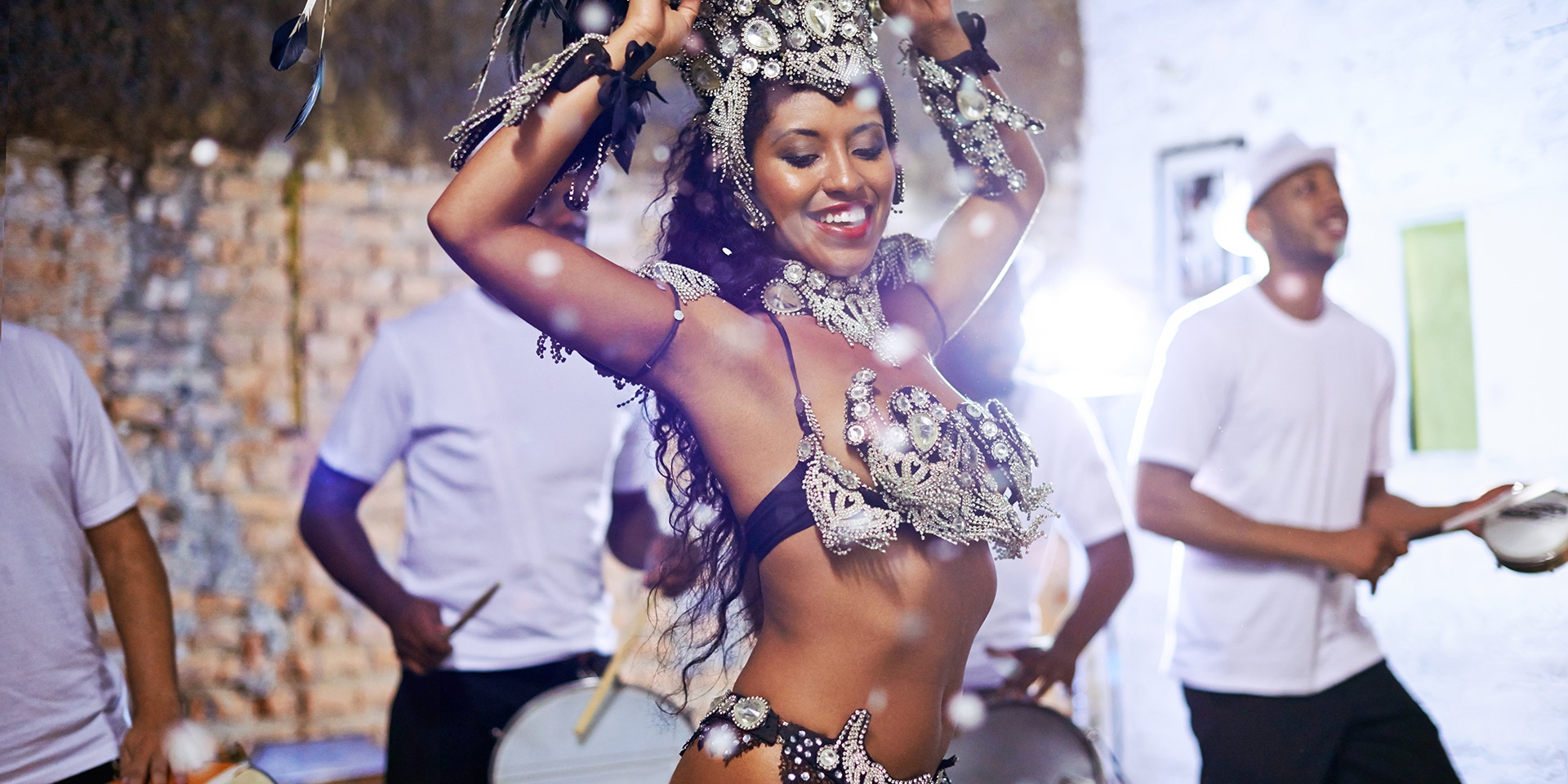One of Rio de Janeiro’s greatest claims to fame is its reputation as the City of Samba. The sexy dance serves as the grande dame of Rio’s Carnival festivities — when seductive samba songs play, they naturally get the party started. Samba, especially for the uninitiated and rhythmically challenged, is a remarkable feat of toe-tapping, shimmying, gyrating and hair-flicking. Brazilians make it look straightforward, maintaining great poise in their upper bodies while their feet patter frantically on the floor. Still, a novice might need a little guidance before lighting up the dance floor.
Learn the Moves
Schools like Samba Fit in Ipanema can teach you how to dance while working out. Getting out in front of the class and sussing out the steps as you go along is great fun. Making any progress at all produces a giddy satisfaction.
For a gentle introduction to the dance, drop in at Bip-Bip in Copacabana. The bar is remarkably tiny, with tables inside and out, but most evenings musicians jam around a table in a setup known as a roda de samba. The players are some of Rio’s best, and in addition to samba, they play choro — a sweet, romantic version of the genre — as well as bossa nova. The music is upbeat, but the atmosphere is respectful, and the owner has been known to hush loudly chatting patrons. Few things are nicer than feeling the cool air of a Rio evening settle while listening to the sounds of the instruments washing over the night air.
Kick Up Your Heels with the Masses
At Pedra do Sal, hundreds gather on Monday nights (and Fridays in the summer) at a large rock in Saúde, north of Centro. The site marks the spot where many of Brazil’s thousands of slaves disembarked upon arrival in the country, and it is a place of great cultural significance for Rio’s black population. The get-together is held weekly (weather permitting) and is a fun and social place to listen to music, dance and make friends. A group of musicians form the heart of the crowd and play from 6 p.m. until 11 p.m. or so. Drinks are supplied by street hawkers selling beers from coolers and making caipirinhas from their carts.
Just around the corner from Pedra do Sal you’ll find Trapiche, an classic, informal samba bar. It occupies a huge rustic house with tiled floors and walls and large chandeliers that throw a warm light over the room. The bar’s mezzanine provides good views down to the roda de samba. Well-practiced locals easily outnumber gringos, so be prepared to be the worst dancer in the room — though don’t be discouraged. The expertly made drinks and tasty petiscos (small bites) will keep you jiving until the early hours. The weekly program includes special guests and occasional performances. It is open Tuesdays through Saturdays. Pro tip: The place really gets going around midnight.
Carioca da Gema also has a changing lineup of top-class singers and musicians. This cozy, exposed-brick-walled house in the Lapa neighborhood has played an important part in the area’s revival and remains a much-loved destination for cariocas and visitors alike. Musicians fill a stage as dancers get their groove on below. If you’re feeling a little shy, station yourself along the elegant staircase and look down on the revelry. There is a small entrance fee to pay, and the bar operates a tab system whereby drinks are marked down on a piece of paper, which is then paid off with the cashiers at the end. Best not to lose your tab!
Billing itself as a “cultural pavilion,” Rio Scenarium is just that. The bar, restaurant and dance hall is a cavernous, glamorous, eccentric setup spread over three floors and filled with antiques and objets d’art. Performers play traditional samba, choro and forró, a type of folk-ish dance music from northeast Brazil, and dancing occurs throughout the venue. After midnight, DJs take to the decks in upstairs rooms. Some acts come on stage at 3 a.m., which makes it easy to dance the night away here. Check the website for the daily lineup and opening hours. Booking is recommended for big groups, and ID is required to enter.




